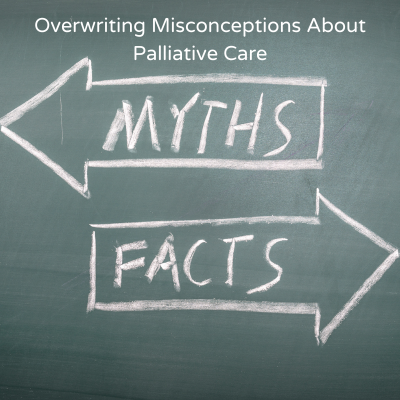Overwriting Misconceptions About Palliative Care

A fog of myths and misconceptions surrounds palliative care – a sad but unfortunate fact. Especially because these myths instill a fear that accepting palliative care means there is no more hope, consequently preventing them from reaching out for it. The truth is that palliative care isn’t exclusively hospice care; it isn’t reserved for cancer patients and doesn’t take away from regular treatments. On the contrary, it has significantly improved the quality of those struggling with long-term illnesses or conditions. Let’s look at some of these myths and see if we can debunk them.
Read: Unravelling Myths About Palliative Care
Palliative Care & Independence
One of the biggest fears associated with palliative care is that it takes away a patient’s independence and leaves them wholly dependent on others. This couldn’t be further from the truth. Fact is, one of the prime focuses of palliative care is helping patients retain their independence for as long as possible and to the best of their ability. It employs various strategies and supportive equipment, if necessary, to enable patients to live with dignity and to the fullest possible extent.
These strategies include:
- Collaborating with the patient and their medical team to chart goals of care that align with the patient’s needs and desires.
- Offering emotional support, counseling services, and spiritual support, enabling patients to express themselves freely.
- Educating caregivers on how to be supportive and retain boundaries so that the patient does not feel suffocated or, to an extreme, made to feel like a burden.
- Educating patients and caregivers on basic changes that can be made within the home to make things easier or more accessible, especially if the patient requires mobility or other bulky support equipment. It also aids in management of the patient at home in a way that reduces hospital visits. Further, it empowers caregivers and enables them to feel less helpless, contributing to caregiver wellbeing as well.
Palliative Care & Treatment
Another myth is that palliative care steps in when other treatments have stopped or exhausted, and doctors have given up hope. This is not true at all. To reiterate, palliative care is not only end-of-life care. Its purpose is to help patients struggling with serious illnesses or conditions that compromise their quality of life to live better. Its many offerings which include pain management, mental health, familial and spiritual support, are provided alongside active treatments that could help a patient recover. Above all else, palliative care aims to help patients receive the care they need and live the best quality of life they can.
Read: Decoding the Facts About Palliative Care
Embracing Palliative Care
There’s much more to palliative care than we often hear. It’s time to move past our fears, ask the right questions, engage with the right individuals, and grasp the true potential of palliative care for ourselves and our loved ones.
Stay tuned for more mythbusters as we try to break down the misconceptions about palliative care and offer insight into its value.





